It is normal for your dog to have eye discharge, just like it happens to you when you wake up from a long sleep. Dog eye discharge does not necessarily have to be a concern because it mostly helps in lubricating the eyes, fighting foreign particles, and easing irritation.
A dog’s body can increases discharge when it needs to get rid of waste. Similarly, their eyes create thick mucus if there is an infection to trap and discard it.
However, a dog with unusual eye discharge can indicate some serious underlying health problems. Nothing can be worse than seeing your little pal in discomfort and you need to know exactly what’s going on with his body to release him of pain.
Don’t you worry; we’ve got your back!
Table of Contents
What Causes Dog Eye Discharge?
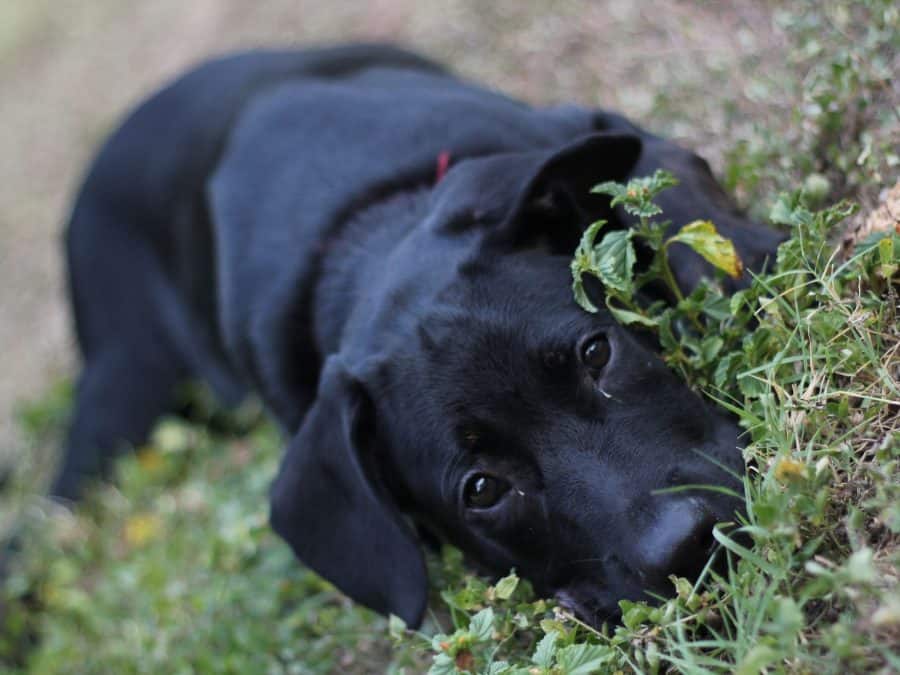
Dog eye discharge can have a lot of causes. A clear discharge is your dog’s body performing it daily a chore. His eyes accumulate debris throughout the day and clean it out of his system through discharge.
However, dog eye discharge green or yellowish-green in color can denote some serious infection. Consult your dog’s vet to get to the main ground of what is affecting your dog. Some common reason could be:
1. Allergies
Spring is the season for most of your dog allergies when flower dander and pollen is in the air. Chances are that the pollen may get into your dog’s system. In response, his cells may release histamine, a compound accountable for causing discharge allergy.
It is more likely to be an allergy if both the eyes have a clear watery discharge. Symptoms could include itching and irritation, sneezing or flushing of the skin.
You can talk to your vet regarding anti-histamine drugs like Zyrtec or Chlor-Trimeton to reduce allergies. Additionally, cleaning the eye with over-the-counter sterile eyewash can also help.
2. Conjunctivitis
Dog’s are strikingly similar to humans and can face human-like conditions. Also known as pink-eye, it is an inflammation on the lining of your dog’s eyes.
It often occurs in one eye and can be either a viral infection or a bacterial one. If it is a viral infection, the discharge would be watery and thick. However, if you see thick yellowish-green mucus, chances are your dog has a bacterial infection.
Viral infection can be cured just by required cleaning (use cotton balls and lukewarm water) and eye drop lubrication to ease the irritation. Bacterial infections need antibiotics.
However, there can be other reasons for conjunctivitis too. It can be congenital or may occur due to allergies, injury, distemper, foreign matter, or sometimes it can also be an underlying tumor. It is better to consult your vet if things don’t improve.
3. Epiphora
Big word! E.P.I.P.H.O.R.A. It is just a fancy word for “excessive tearing” that can cause irritation, inflammation, and sometimes smelly fur or infected skin.
It is often caused due to an abnormally inward grown eyelash which can gash the cornea causing redness and watery eyes.
Tear duct inflammation may require a blend of antibiotics with ophthalmic corticosteroids which can ease redness and irritation. Corneal damage needs to be treated with the help of antibiotics and topical medication. However, if the issue is serious, your dog may have to go through a surgery.
Symptoms may include redness, excessively watery eyes, pain, or swelling around the eye. It is best if you consult the vet if your dog shows such symptoms. Also, make sure you get his eyelashes trimmed if that is the cause of irritation.
4. Keratoconjunctivitis Sicca
Keratoconjunctivitis Sicca or dry eyes can be caused due to the inability of your dog’s tear duct to produce enough eye-cleaning tears.
Symptoms may include mucus and inflammation. It can be a result of distemper, injury in the tear-producing gland, or the dog’s immune system attacking this gland.
Dogs with dry eyes are prone to infection and can lead to severely inflamed eyes. Artificial tear drops can help alleviate irritation and lubricate your dog’s eyes. However, if something is serious, your vet may prescribe antibiotics or immunosuppressant drugs to control his immunity system.
5. Glaucoma
It is an eye condition that is caused due to a build-up pressure and can lead to optical nerve damage. It may also cause complete blindness in senior dogs.
It may result in extreme pain, and the vet may have to decrease the pressure by surgery or heavy medication. You can give your dog some CBD treats to reduce the recurrence of Glaucoma.
6. Breed Inclination
Some dog breeds tend to have excessive eye discharge. Brachycephalic or flat-faced dog breed like a pug, bull-dog, boxer, are prone to ocular discharge because of their shallow eye sockets and protruding eyes. This sometimes leads to entropion (inward-rolled eyelids) and tear drainage problems causing irritation. It may require surgery if left unattended.
However, dogs with loose facial skin like St. Bernard, beagles, cocker spaniels are vulnerable to ectropion (outward-rolled eyelids) causing cherry eyes.
It is a condition when an eyelid gland deforms. It can be cured by medication but serious cases might need surgery.
If you are a dog parent of a flat-faced or loose-faced breed, make sure you clean his eyes and take him for eye check-ups frequently.
Woof! Almost OD-ed on scientific terms.
What are the types of Dog Eye Discharge?
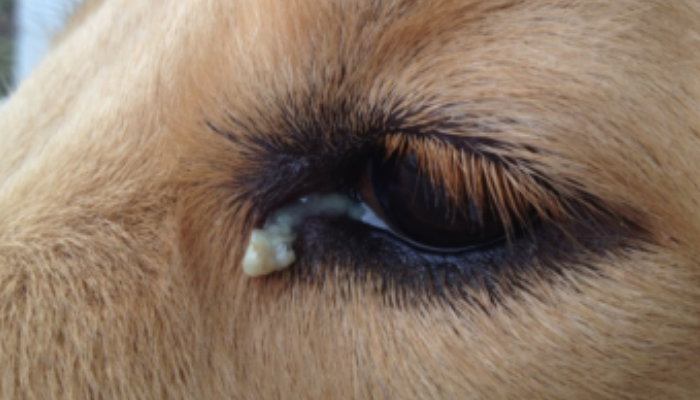
1. Dog Excessive Tearing
Teary or runny eye in dogs is normal. It is a part of their daily body process. However, excessive tearing can mean serious problems. If tearing develops in redness or inflammation, it is time to take your pooch to the vet.
Reasons behind your dog’s runny eyes could be allergies, corneal damage, glaucoma, or breed-prone tearing.
2. Dog Eye Boogers
“Eye Boogers” or “sleepies” as they are called, are nothing but discarded oil, dust or dried tear. Generally black or brown, and can appear even when your dog has slept more than usual.
You just need to take a cotton ball and some lukewarm water to wipe these off.
Boogers are of less concern unless turning into irritation or redness in the eye, then you need to consult your vet.
3. Dog Eye Discharge – Brown
Dogs like Pomeranian, Golden Retriever, and Golden Labrador, which have light fur shade, tend to develop brown stain around their eyes.
This is due to the presence of porphyrin in dog tears. Porphyrin turns dog eye discharge brown in color when exposed to air and allowed to dry.
If your dog doesn’t face any discomfort with it, all you need to do it wipe their eye regularly without giving porphyrin to dry. You can also get an antibiotic-free supplement which will reduce staining over time.
4. Dog Eye Discharge – Green and Yellow
*CAUTION! IT GETS DANGEROUS FROM HERE.*
Dog eye green discharge generally is a cause of infection. There can be underlying causes like tear duct damage, eye damage, or can be that your dog’s immunity has been attacked by more serious illness.
Goes without saying that is, as soon as you see such a discharge, run to the vet.
Note: Yellow-green discharge in puppies can be due to repeated vaccination within short intervals. This doesn’t necessarily mean your dog is sick. It is advised to take him to the vet and find the root cause.
5. Dog Eye Discharge – White
Thick white or grey mucus can be dangerous. It is a symptom of dry eye and you would want to take your doggo to the vet immediately.
Keratoconjunctivitis (dry eyes) that decreased the tear creating capacity of the tear duct results in white dog eye discharge.
If not treated in time, it may lead to partial or complete blindness.
How to Prevent Dog Eye Discharge?
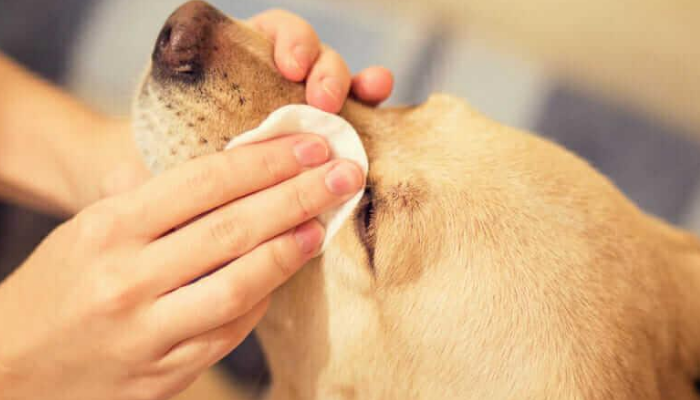
Prevention is better than cure. It is always better to take care of your dog’s ocular hygiene before it turns out to be something major.
- Inspection – Inspect your doggy’s eye frequently and check if both the eyes are of the same size and with little or no booger. You have to look for squinting, tearing, and redness. The inner eyelid should not be visible and the lower lid should be pink (not red or white).
- Lukewarm Water Wash – If you need to wake up clean your eyes off the boogers, your dog needs that too. Wipe your dog’s eyes gently with some lukewarm water and a cotton pad every day.
- Eye Grooming – Keep your dog’s long fur out of his eyes. Pet parents of breeds like Lhasa, Bearded Collie, and Pekingese need to take special care of their grooming. They can be prone to outward or inward grown eyelids which can cause irritation and inflammation. Don’t forget to take them to a groomer once a while and give them a new look. A relief to both your and his eyes.
- Balanced Diet – A nutritious diet is very important to build your dog’s immunity. You can also give him some vet prescribed immunosuppressant that will help prevent his immune system from attacking.
- Eye Drops – An over the counter sterile eye cleanser can help get rid of all those sticky boogers irritating your pooch’s eyes.
- Substances – Keep eye-irritating substances like soap, shampoo, and medication away from the eyes. If the eye turns red while bathing, hold his head gently and flush it out with water. You can obtain some saline solution to wipe his eyes. It prevents soap from irritating the dog’s eyes. Use natural dog-bath shampoos to avoid eye damage.
Suggested: How to Bathe a Dog?
Dog Eye Discharge – Home Remedy
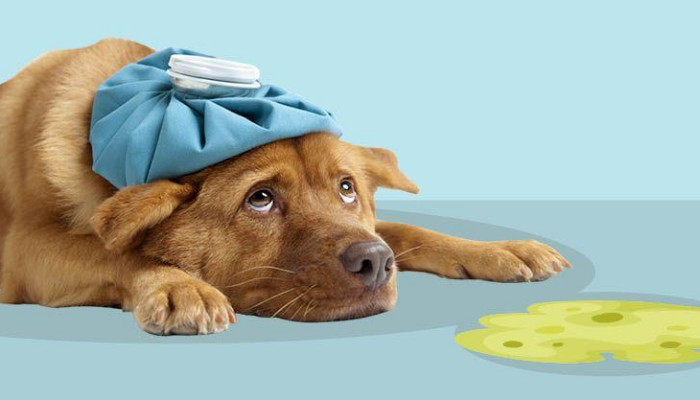
A vet is an ultimate option but you can help ease your dog’s irritation but using these 8 best home remedies which are natural and safe.
- Saline Solution – Boil some water. Add half a teaspoon in then cooled water. Once blend properly, use a cotton pad to soak in the solution and then gently wipe the discharge around his eyes.
Keeping your dog’s eye clean is one of the most vital things to prevent infections - Moist Warm Compress – Compress is an age-old tradition to fight mild eye infections.
Use a clean cloth and soak it in warm water. Squeeze the excess water off the cloth. Compress the moist, warm cloth against the wound and let it rest there for a while. Repeat until the water turns cold.
Exposing heat and moisture to certain conditions can reduce pain and irritation. - Rooibos or Redbush Tea – Rooibos can help cure a lot of eye infections.
Brew the tea in some water. Once cooled, apply it on the eyes with a cotton swab.
Herbal washes have worked miracles with dog eye discharge and infections. You can also use chamomile tea bags, red clover, and calendula as a substitute for rooibos tea. - Vitamins – Increase vitamin intake of your dog. Alternatively, you can give him multivitamin and Vitamin A tablets to maintain a clear cornea and avoid frequent discharge.
- Honey Eye Drops – Honey has antibacterial properties and can be used to cure dry eyes.
Add 5 teaspoons of honey in a cup of boiling water. Stir well. Let it cool down completely. Once done you can use it as a mixture to wipe your dog’s eye.
Chances are he might just start licking your hands but you can always try. - Nutrition – A nutritious diet promotes good health. You can try including carotene-rich food like orange, carrots, and pumpkins in your pet’s diet. Feeding a carrot every morning before his breakfast can help strengthen his vision. Blueberries are a good source of antioxidants and sardines are stuffed with omega oil. All these can contribute to a healthy dog eye.
- Cod Liver Oil – Cod liver oil is rich in omega – 3 fatty acid and vitamin A. Studies have shown that omega-3 fatty acid has reduced the risk of glaucoma and nerve damage in animals. It is believed to be an effective lubricant for eyes infected with conjunctivitis. You can buy cod liver oil from a nearby chemist and use it to reduce irritation and dryness in the eyes of your pupper.
- Apple Cider Vinegar – Some people recommend apple cider vinegar for the dog’s eye.
Dilute a small amount of apple cider vinegar and use it only in the external area. Wipe it off entirely with a wet cotton swab after a while and rinse his eyes if needed.
It is said to have antibacterial properties but the excess application might cause irritation and worsen the pain. It is not recommended for internal usage.
Note: These are natural remedies for dog eye discharge and infection. However, if these do not work and the condition worsens, you should take your dog to the vet immediately. He might need medical assistance. Additionally, take your dog for regular eyes and ear check-ups to avoid inviting unnecessary health problems.
It’s Time to Take Your Dog to Vet When
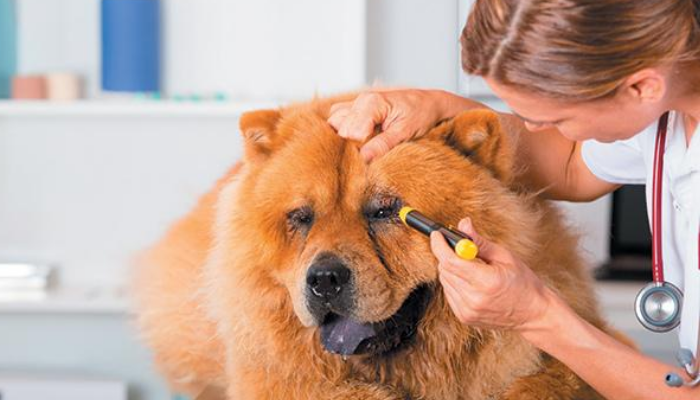
- There is excessive redness in the inner eyelid with green or yellow eye discharge.
- Constant tearing.
- If your dog cannot open his eye at all.
- If his eyes have inflamed or swollen.
- Change in the color, thickness, and quantity of discharge.
- If your dog keeps scratching his eyes.
- There is uncontrolled dog eye discharge and he is not eating, or there is a significant change in appetite.
Ocular hygiene is important because it is your dog’s eye that does most of the speaking, after all!
Frequently Asked Questions
Note - Your pet needs regular eye grooming and cleansing to keep dog eye discharge and infection put.
It was also lead to reduced food intake or change in your dog's diet.
Dogs with dry eyes are prone to worse infections. Artificial tear drops can alleviate irritation and lubricate your dog's eye. However, if something is serious, rush to the vet. He may prescribe antibiotics or immunosuppressant drugs to control his immune system.
Hope this article could be of help to you.
Let us know how you liked the article.
If you have any queries or concerns, you can reach out to us in the comment section below.
Share this article on Whatsapp and Facebook to help your friends who are stuck with a decision.
Subscribe to us on YouTube and follow us on Instagram for more such content.
Read our next article on how to keep your dogs cool in the summer?
Happy Petting To You!



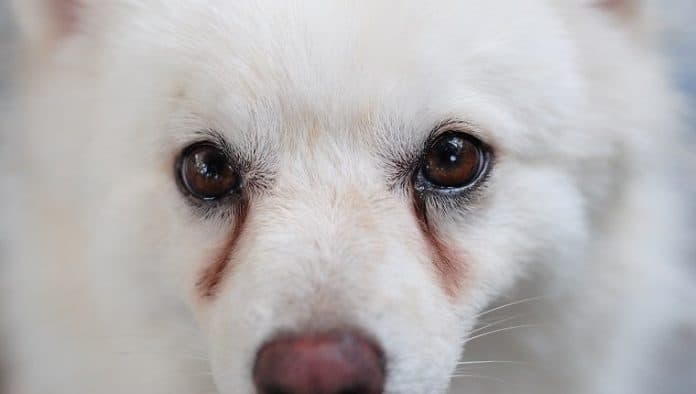









[…] essential to keep its body intact and also avoid any health problems like excessive dog shedding, dog eye discharge, […]
[…] deficiency, hip or Elbow dysplasia, pain in some body part , itchy skin or dog eye discharges may give rise to the discomfort of the […]
[…] of the lens prevents proper eye fluid discharge with glaucoma as the […]
[…] confuse this with Dog Eye Discharge which is an entirely different thing of its […]
[…] for your pup’s dental health is as important as caring for his eye discharges or his excessive […]
[…] Advice: Keep a check of your Shih-Tzu’s eyes for dog eye discharge. They can get cause irritation if not cleaned at regular […]
[…] Their eyes should be monitored and treated, if wax or dirt is accumulated. They should be constantly checked for any kind of dog eye discharge. […]
[…] Surprisingly, when dogs pull on their leashes, the motion builds pressure inside his eyes and can lead to glaucoma. […]
[…] Whiskers around their eyes are even smarter. When something touches the tip of their eye whiskers, it causes them to blink. This keeps harmful physical elements from getting in their eyes thereby preventing eye infections. […]
[…] a place.Symptoms may include eye irritation, redness in the eye, cloudy cornea, or green mucus-like eye discharge.Mild cases can be cured by medication. However, if it gets serious your dog might need surgery or […]
[…] done once a month and clear his eye regularly because this breed is prone to accumulation of dog eye discharge which may lead to eye […]